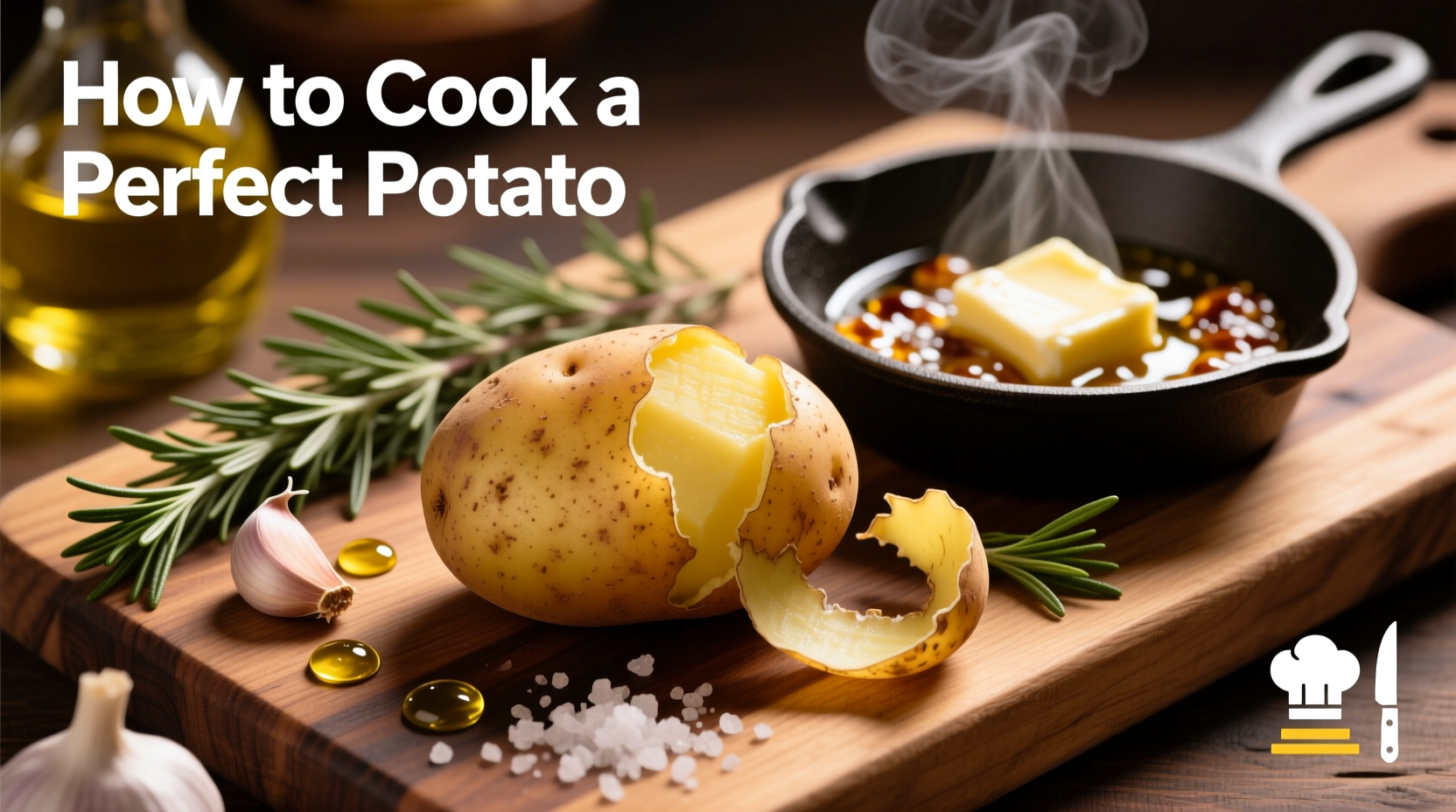Boil waxy potatoes like Yukon Gold for 15-20 minutes until fork-tender for salads, or roast starchy Russets at 400°F (200°C) for 45 minutes to achieve crispy edges and fluffy interiors. Always season cooking water with 1 tablespoon salt per pound of potatoes, and never microwave potatoes without piercing their skin to prevent explosions.
Mastering potato preparation transforms this humble tuber into culinary gold. Whether you're a beginner cook or seasoned chef, understanding potato varieties and cooking techniques ensures perfect results every time. This guide delivers actionable methods tested by professional kitchens, eliminating common mistakes that lead to mushy, unevenly cooked, or bland potatoes.
Choosing the Right Potato for Your Dish
Selecting the proper variety is your first critical decision. Potatoes fall into three main categories based on starch content, each suited for specific cooking methods:
| Potato Type | Starch Level | Best Cooking Methods | Common Varieties |
|---|---|---|---|
| Waxy | Low (16-18%) | Boiling, steaming, salads, roasting | Red Bliss, New Potatoes, Fingerlings |
| Medium | Moderate (18-20%) | Boiling, mashing, roasting, frying | Yukon Gold, Atlantic |
| Starchy | High (20-22%) | Baking, mashing, frying | Russet, Idaho |
According to the USDA Agricultural Research Service, starch content directly affects texture outcomes. Waxy potatoes maintain their shape when cooked due to lower starch and higher moisture content, making them ideal for potato salads. Starchy varieties break down more easily, creating the fluffy texture perfect for mashed potatoes and crispy roasted exteriors.
Essential Preparation Techniques
Proper preparation prevents common cooking disasters:
- Washing: Scrub potatoes under cold running water with a vegetable brush to remove dirt. Never soak potatoes as they absorb water, leading to soggy results.
- Peeling: Leave skins on when possible for added nutrients and texture. Use a sharp peeler for thin removal if needed.
- Cutting: Cut uniform pieces (1.5 inches) for even cooking. Place cut potatoes in cold water immediately to prevent oxidation.
- Drying: Pat potatoes completely dry before roasting or frying to ensure proper browning.

Five Foolproof Cooking Methods
1. Perfect Boiled Potatoes
Ideal for salads, side dishes, or prepping for roasting:
- Place potatoes in a single layer in a large pot
- Cover with cold water by 1 inch (never hot water)
- Add 1 tablespoon salt per pound of potatoes
- Bring to gentle boil, then reduce heat to maintain simmer
- Cook 15-20 minutes until fork-tender but not falling apart
- Drain immediately and let sit 2 minutes to evaporate excess moisture
The University of California Cooperative Extension confirms that starting potatoes in cold water ensures even cooking throughout, preventing the exterior from becoming mushy while the center remains undercooked.
2. Crispy Roasted Potatoes
Restaurant-quality results at home:
- Parboil cut potatoes for 5 minutes in salted water
- Drain and shake in colander to roughen edges
- Toss with 2 tablespoons oil, 1 teaspoon garlic powder, salt, and pepper
- Spread in single layer on parchment-lined baking sheet
- Roast at 400°F (200°C) for 45-50 minutes, flipping halfway
- Finish under broiler for 2-3 minutes for extra crispness
3. Fluffy Mashed Potatoes
Avoid gluey results with these professional techniques:
- Use starchy Russets or Yukon Golds for best texture
- Always warm milk or cream before adding to potatoes
- Use a potato ricer or food mill instead of a blender
- Add butter first, then warm liquid gradually
- Season with white pepper to maintain visual appeal
Common Potato Cooking Mistakes to Avoid
Understanding these pitfalls ensures consistent success:
- Overcrowding the pan: Leads to steaming instead of roasting. Use two baking sheets if needed.
- Adding salt too late: Salting cooking water seasons from within, while adding after cooking only affects surface.
- Underseasoning: Potatoes need more salt than you think - aim for ocean-water salinity in boiling water.
- Mixing varieties: Different starch levels cook at different rates, causing uneven results.
The Food Safety and Inspection Service warns that improperly stored cooked potatoes can develop harmful bacteria. Always refrigerate leftovers within two hours, and consume within 3-4 days. Never leave cooked potatoes at room temperature overnight.
Storing Potatoes Properly
Extend shelf life with these storage guidelines:
- Store in cool, dark place (45-50°F / 7-10°C) - not the refrigerator
- Keep away from onions which release gases that accelerate sprouting
- Never wash before storage as moisture promotes decay
- Check regularly and remove any soft or sprouting potatoes
According to the American Potato Board, refrigeration below 40°F (4°C) converts potato starch to sugar, causing darkening when cooked and altering flavor.
Advanced Tips for Perfect Results
Elevate your potato dishes with these professional techniques:
- Add a pinch of baking soda to boiling water for extra fluffy mashed potatoes
- Toss roasted potatoes with duck fat for superior crispness
- Soak cut potatoes in cold water for 30 minutes before frying to remove excess starch
- Add a sprig of rosemary or thyme to boiling water for subtle flavor infusion
Remember that altitude affects cooking times - at elevations above 3,000 feet, increase boiling time by 25% as water boils at lower temperatures.











 浙公网安备
33010002000092号
浙公网安备
33010002000092号 浙B2-20120091-4
浙B2-20120091-4